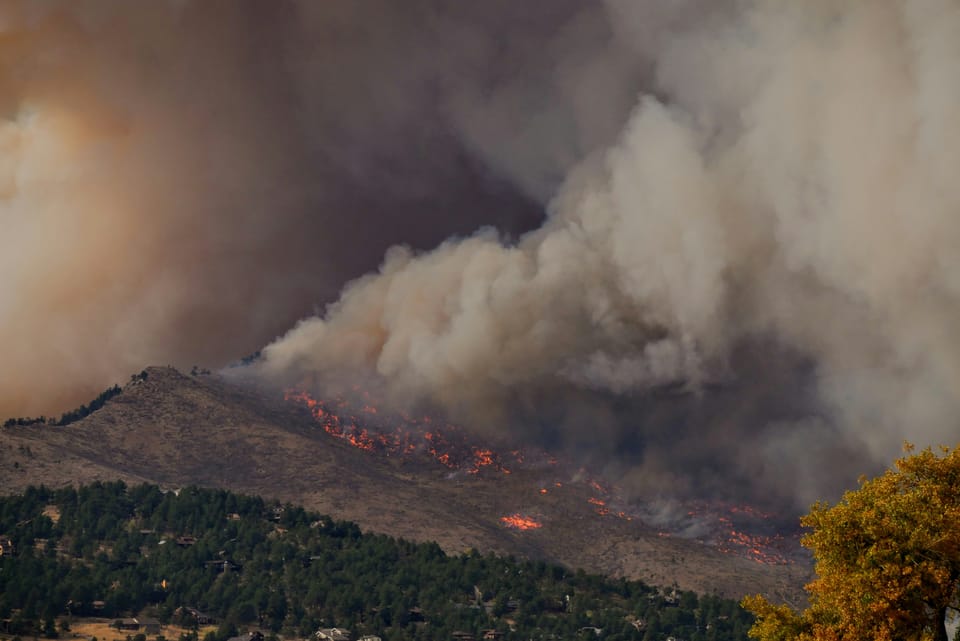Experts sound ‘global red alert’ as fires trigger record-high forest loss

Global forest loss reached unprecedented levels in 2024, releasing four times more emissions than all air travel in 2023 – with fires overtaking agriculture as the leading cause for the first time.
According to new data from the University of Maryland’s GLAD Lab, made available on World Resources Institute’s (WRI) Global Forest Watch platform, the world lost 6.7 million hectares of tropical primary forests in 2024 – an area equivalent to the size of Panama.
For the first time on record, fires were the leading cause of forest loss, accounting for nearly 50% – a dramatic rise from the average 20% of previous years. Fires in tropical forests are most often set by humans trying to prepare new areas for farming, and record-high temperatures in 2024 made these harder to control, leading to much more extended forest loss.
Elizabeth Goldman, Co-Director of WRI’s Global Forest Watch said: "This level of forest loss is unlike anything we've seen in over 20 years of data. It's a global red alert – a collective call to action for every country, every business and every person who cares about a livable planet. Our economies, our communities, our health – none of it can survive without forests.”
Beyond their sometimes irreversible effect on forests, the fires also emitted 4.1 gigatonnes of greenhouse gas emissions, impacting air quality and water supplies and affecting the lives of millions.
Progress against deforestation remains too slow
The report notes some positive developments, particularly in Southeast Asia, where Indonesia managed to reduce primary forest loss by 11% last year, reversing a steady rise between 2021 and 2023. Malaysia also saw a 13% decline and fell out of the top 10 countries for tropical primary forest loss for the first time.
But overall, things are still going in a “troubling direction”: of the 20 countries with the largest area of primary forest, 17 have higher primary forest loss today than when the Glasgow Leaders Declaration promising to halt and reverse forest loss by 2030 agreement was signed in 2021.
On top of the rapid rise in deforestation caused by fires, tropical primary forest loss driven by other causes also jumped by 14% – the sharpest increase since 2016.
In order to halt forest loss by 2030, the world should reduce deforestation by 20% every year – yet tropical forest loss increased by 80% in 2024. To reverse the trend, the report urges governments to increase fire prevention and companies to work harder to eliminate deforestation in their commodities supply chains.
Read also: Nestlé, Unilever and Danone stand out as leaders in the fight against deforestation
Brazil still tops forest loss
In Brazil, President Lula’s government has made progress in reducing deforestation after it reached peaks under former President Bolsonaro. But the country still accounted for 42% of all tropical primary forest loss in 2024. This was largely due to drought-fuelled fires, which caused 66% of the loss – over six times more than in 2023.
Other causes, such as large-scale soy and cattle farming, also led to a 13% increase in deforestation last year, and the Amazon experienced its highest tree cover loss since 2016.
Mariana Oliveira, Director Forests and Land Use Program, WRI Brasil added: “Brazil has made progress under President Lula — but the threat to forests remains. Without sustained investment in community fire prevention, stronger state-level enforcement and a focus on sustainable land use, hard-won gains risk being undone. As Brazil prepares to host COP30, it has a powerful opportunity to put forest protection front and center on the global stage.”
Bolivia also saw record levels of forest loss in 2024 – up 200% from the previous year and totalling 3.7 million acres. The country overtook the Democratic Republic of Congo with the second-highest forest loss, despite having less than half its forest area – with the report pointing to drought-fuelled megafires and government policies promoting agricultural expansions as reasons for this increase.
Still, the Democratic Republic of Congo (DRC) and the Republic of Congo (ROC) saw their highest levels of primary forest loss on record last year, up 150% in the ROC.
Peter Potapov, Research Professor, University of Maryland; Co-Director, Global Land Analysis and Discovery (GLAD) Lab said: "2024 was the worst year on record for fire-driven forest loss, breaking the record set just last year. If this trend continues, it could permanently transform critical natural areas and unleash large amounts of carbon – intensifying climate change and fueling even more extreme fires. This is a dangerous feedback loop we cannot afford to trigger further."







Member discussion